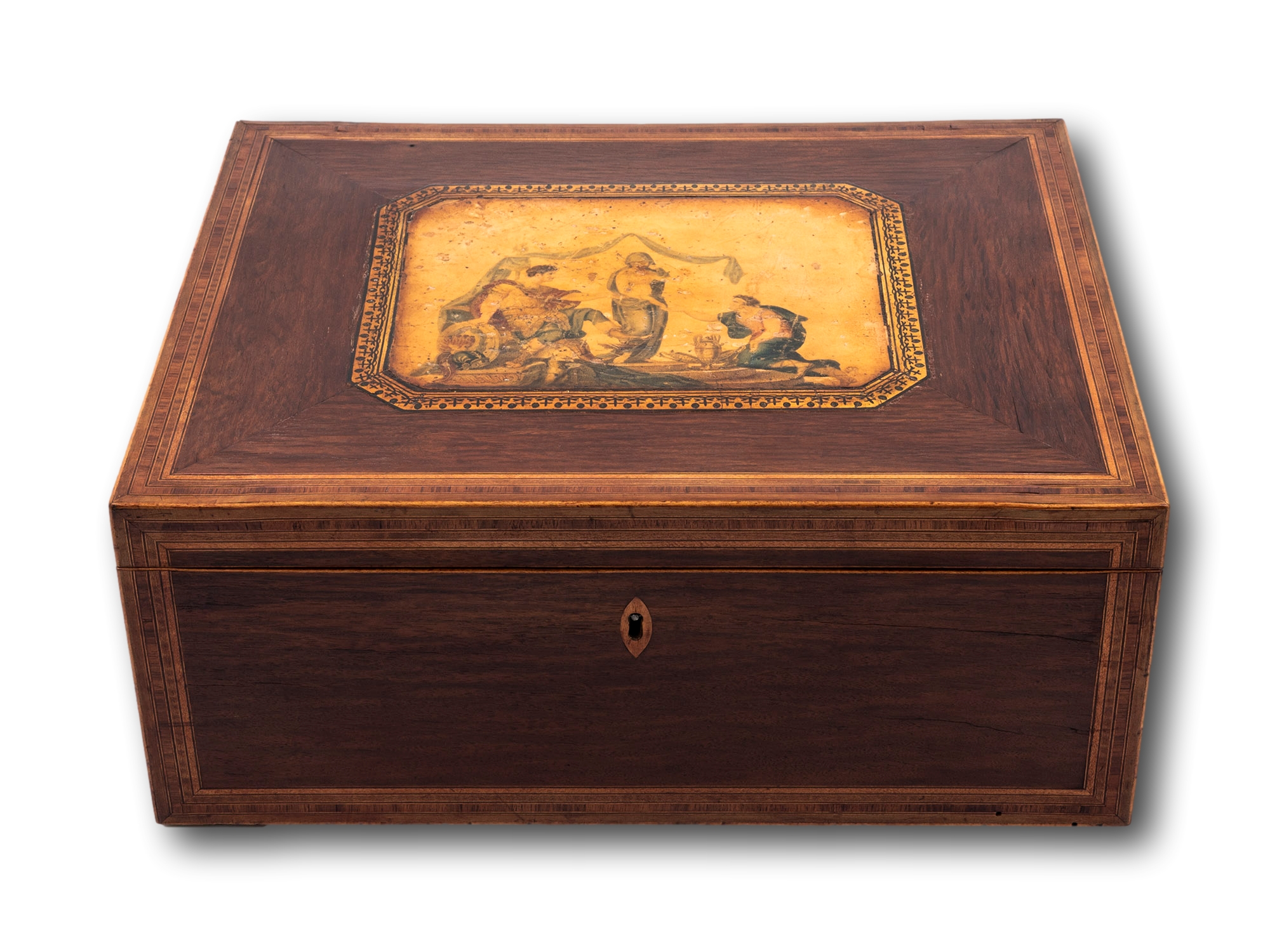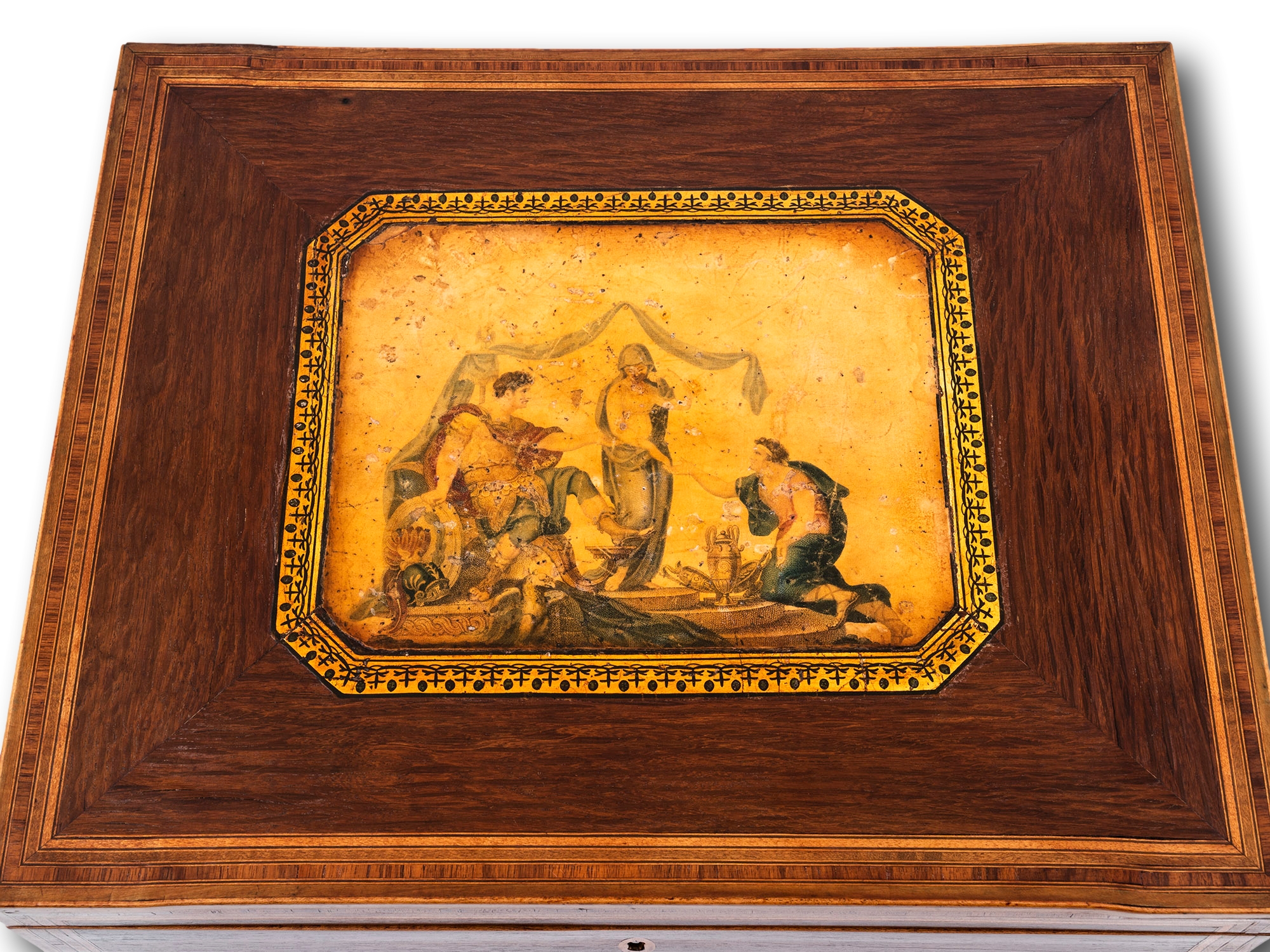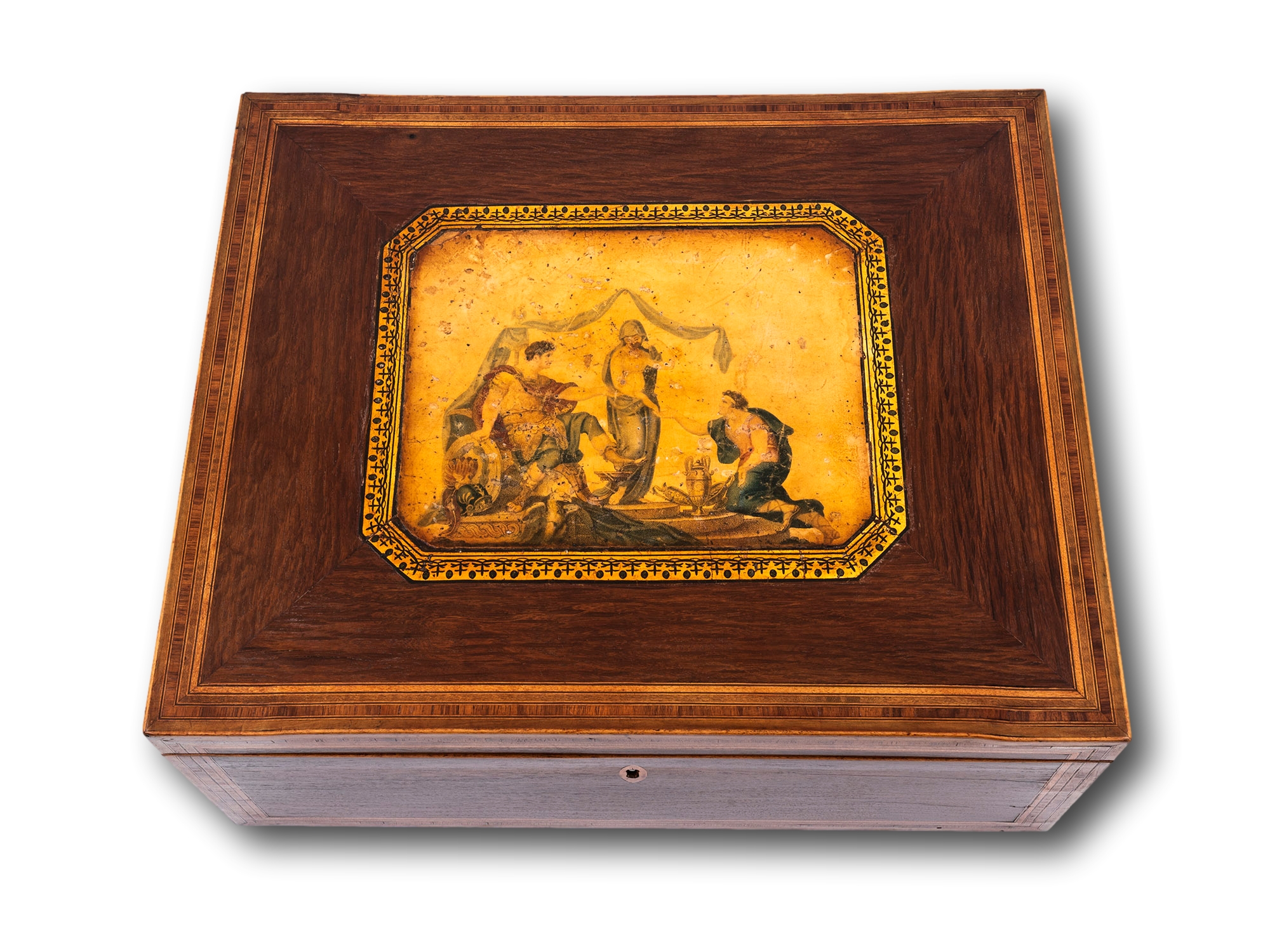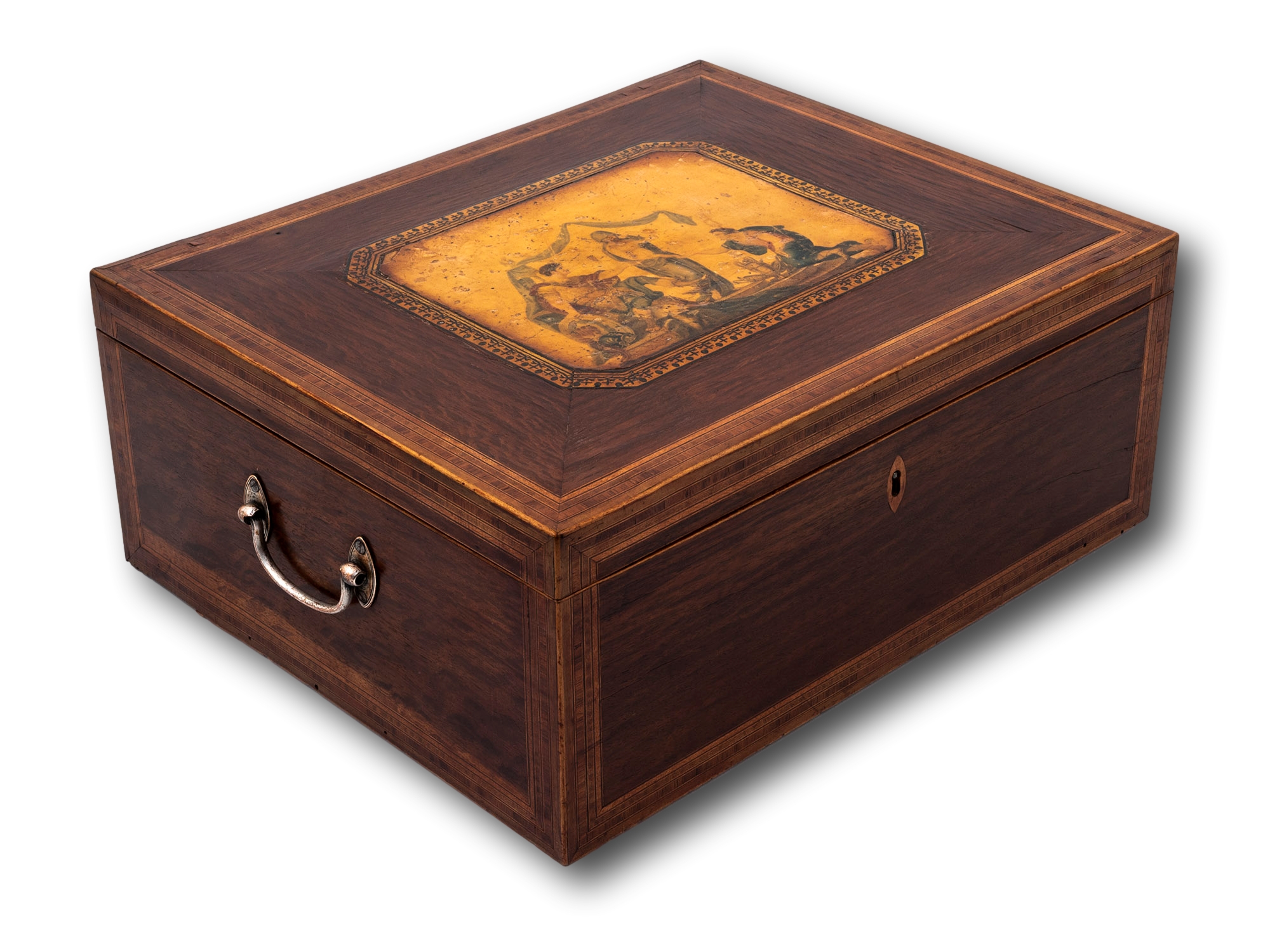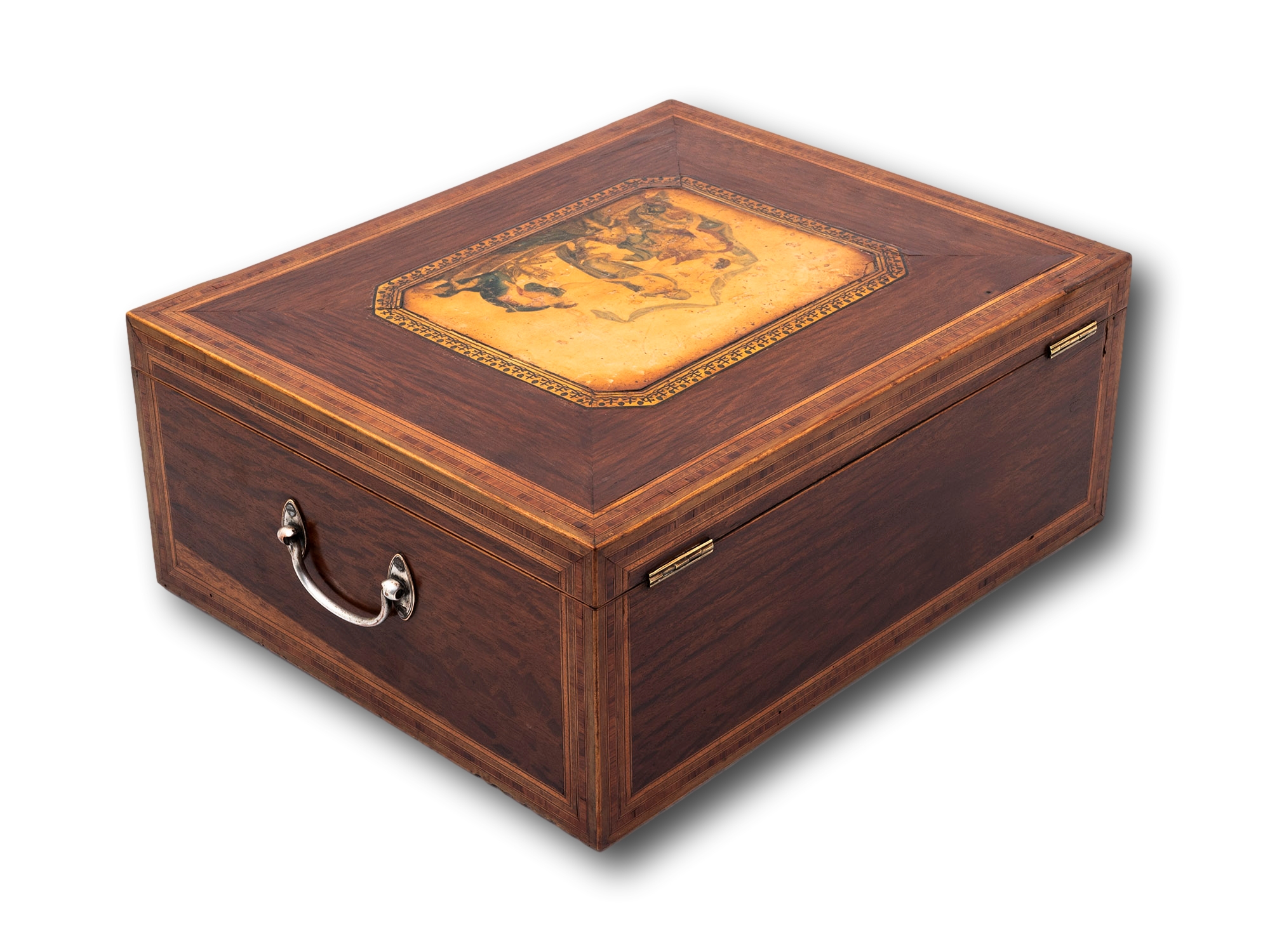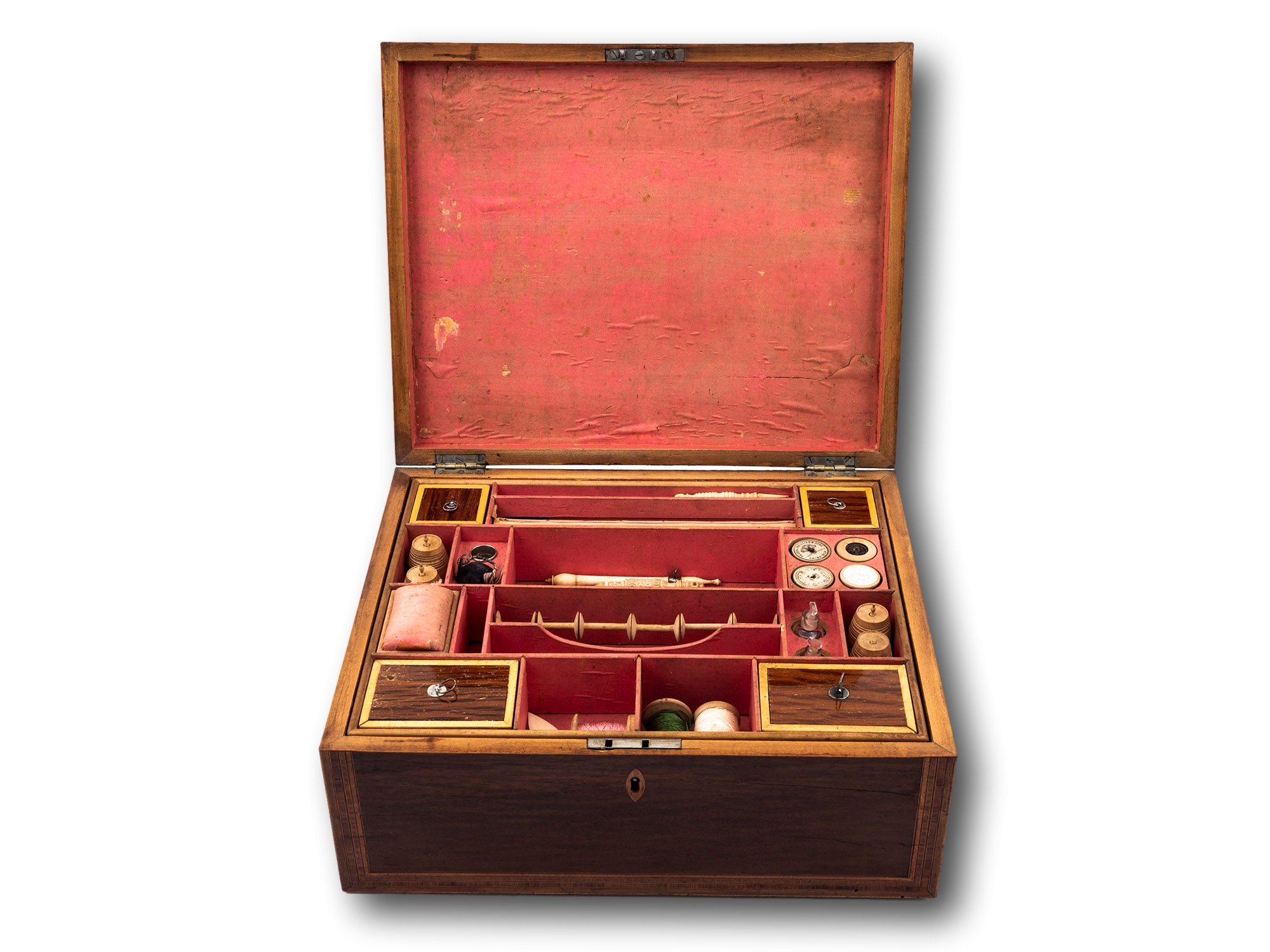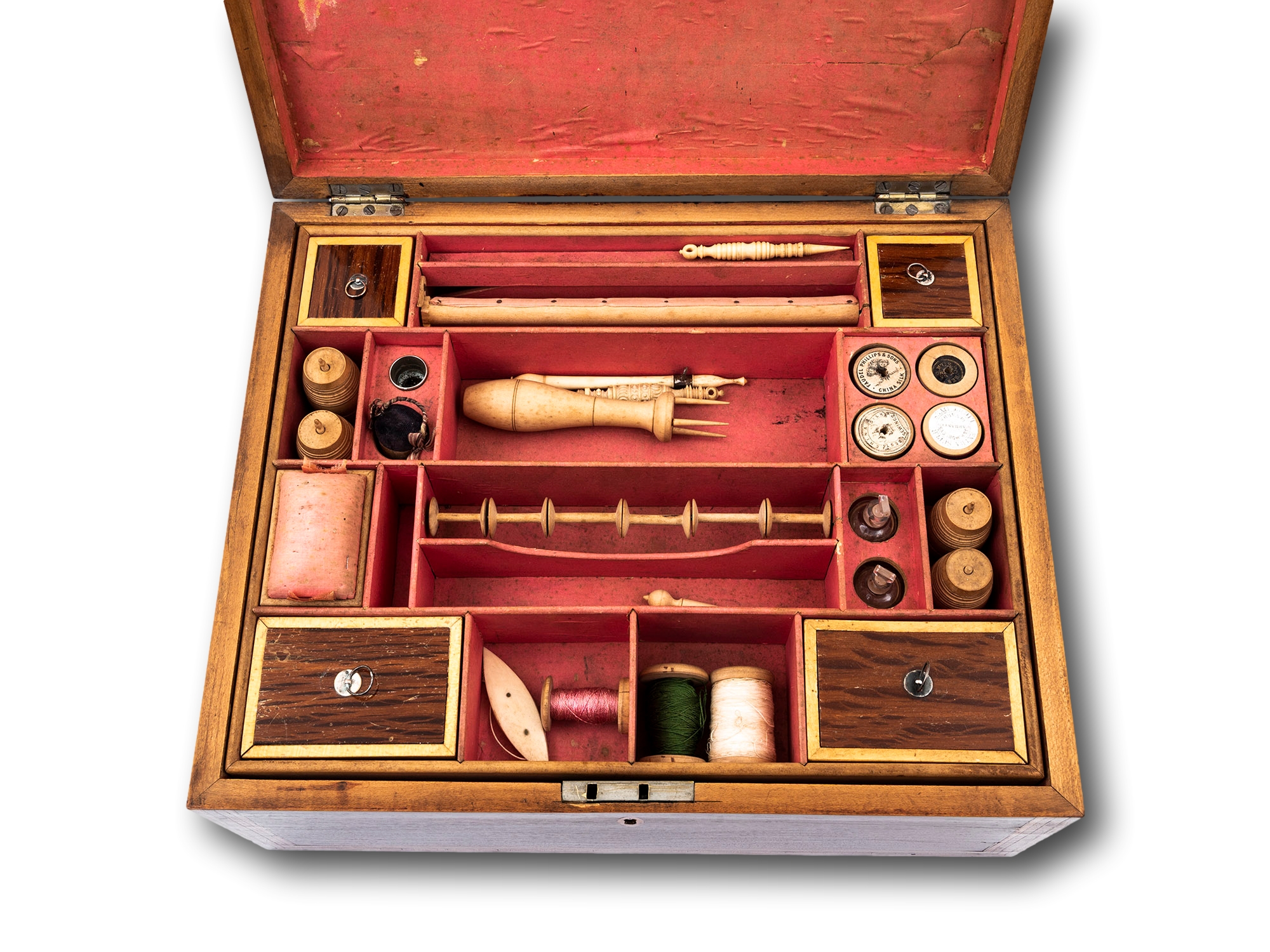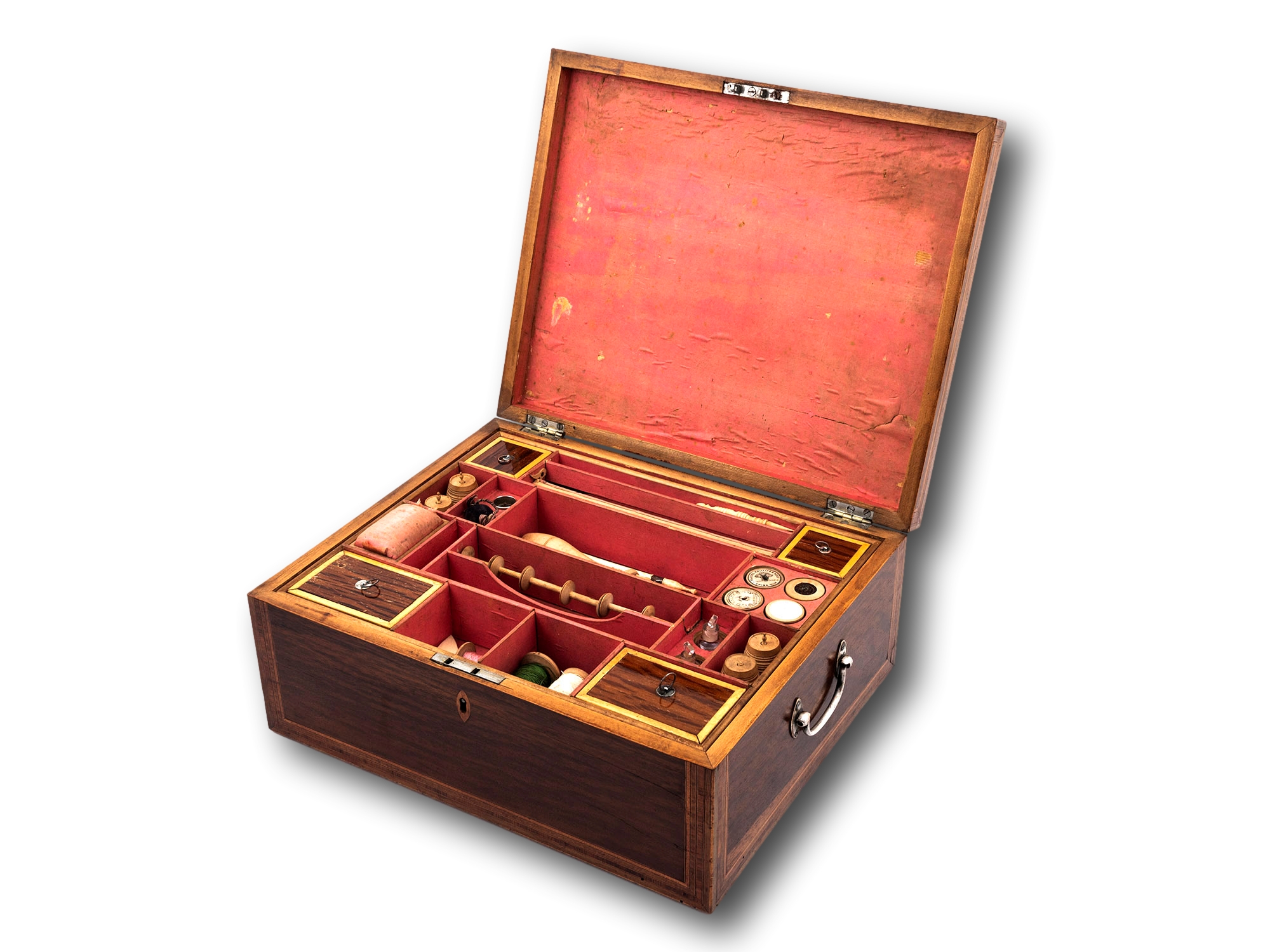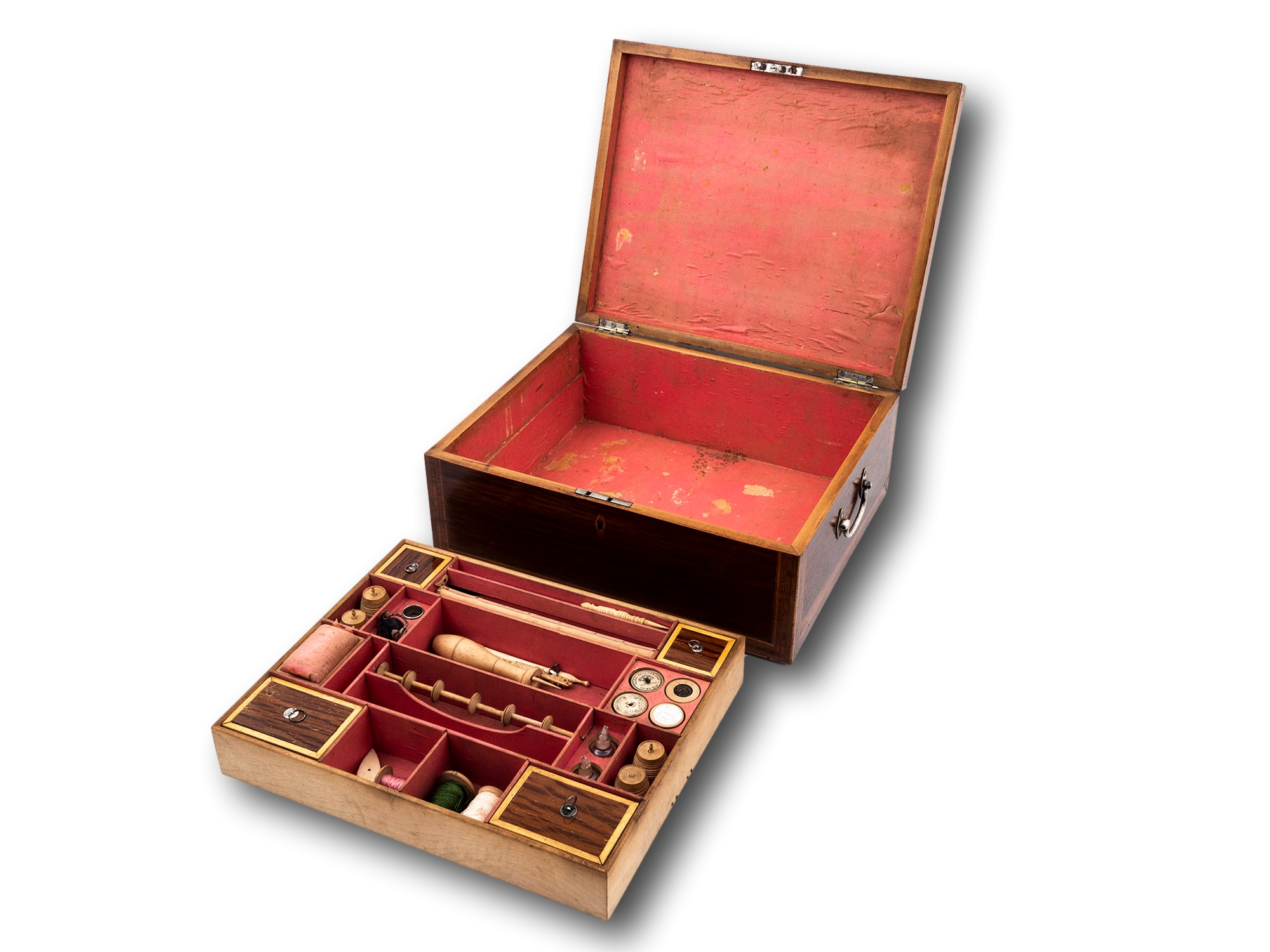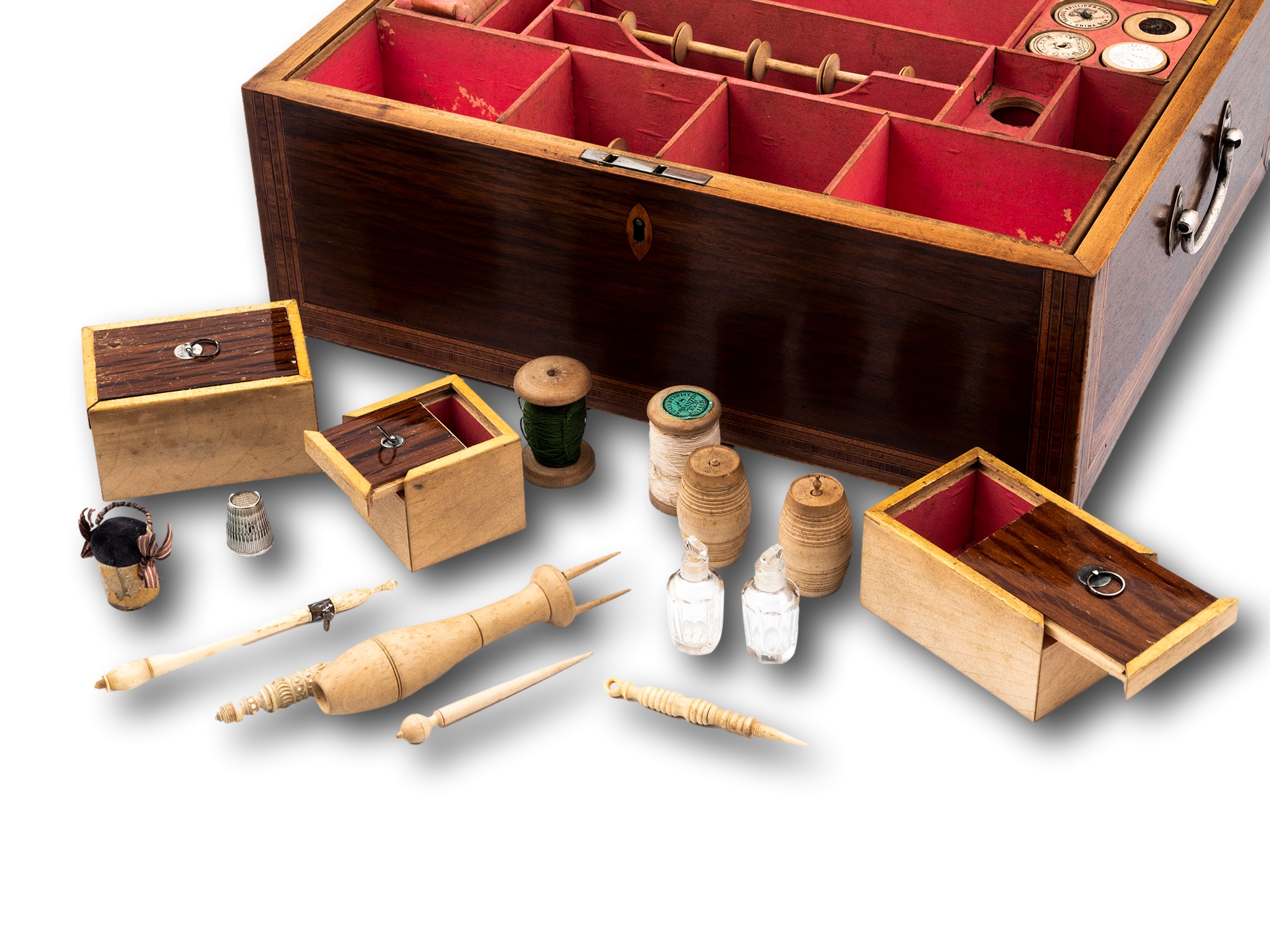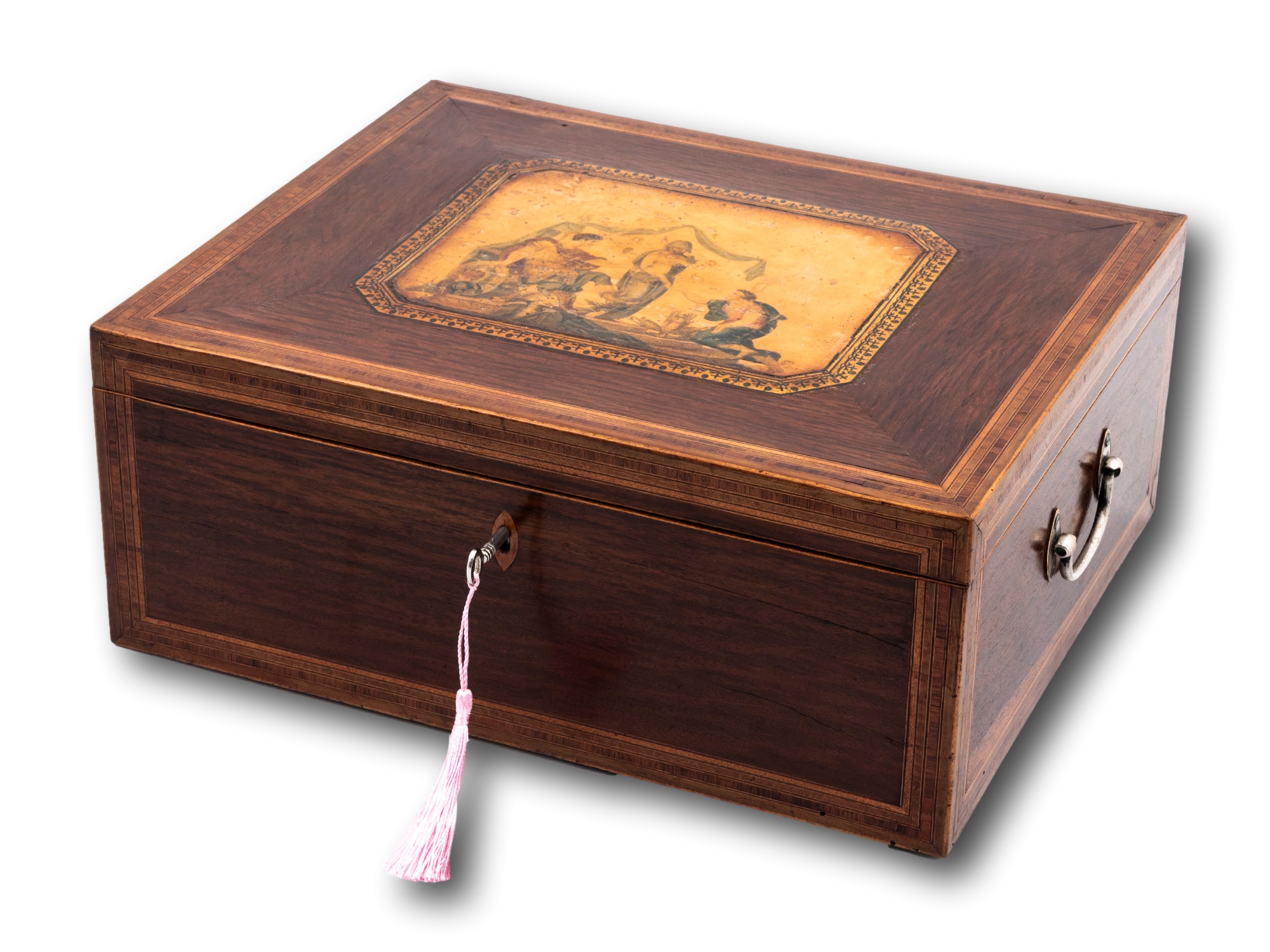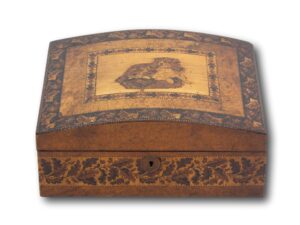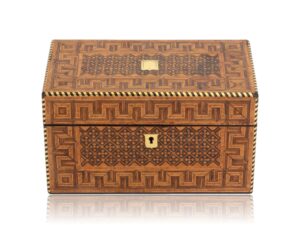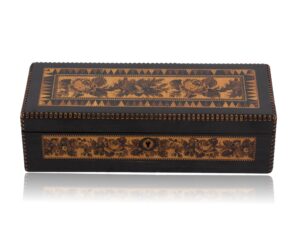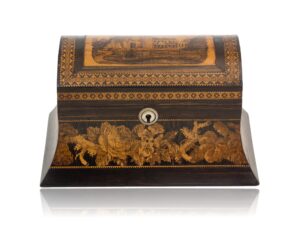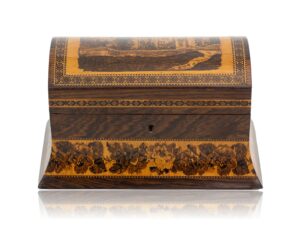Regency Tunbridge Ware Sewing Box
£800.00
Fitted Interior & Silver Handles From our Tunbridge Ware collection, we are delighted to offer this Tunbridge Ware Sewing Box. The Sewing Box of rectangular form beautifully veneered in Partridge wood edged in crossbanded Tulipwood and Satinwood with Boxwood stringing and... Read More
Regency Period Circa 1815

| Dimensions | 34.5 × 28 × 14 cm |
|---|---|
| Country | |
| Year | |
| Period | |
| Medium | |
| SKU | 501063 |
Description
Description
Fitted Interior & Silver Handles
From our Tunbridge Ware collection, we are delighted to offer this Tunbridge Ware Sewing Box. The Sewing Box of rectangular form beautifully veneered in Partridge wood edged in crossbanded Tulipwood and Satinwood with Boxwood stringing and stained Sycamore. The lid features a central classical Roman scene with the emperor receiving an offering within a symmetrical border. When opened the Sewing Box reveals the red paper lining and partitioned central removable tray with compartments containing multiple sewing tools including thread reels, a thimble, a pair of prickers, perfume bottles, a pin cushion, thread waxes as well as some tiny storage boxes with sliding lids that can be removed. Below the tray is a storage area for larger tools or yarn. The Tunbridge Ware Sewing Box dates to the Regency period and early 19th century during the reign of the Prince Regent George circa 1815.
The box comes complete with working lock and tasselled key.
Partridge Wood also known as Cabbage wood, is found in South America. It can come in a variety of colours ranging from red-brown, brown to almost black. Partridge wood is similar to rosewood in density and grain tightness. It’s a slightly rarer wood due to the difficulty of finishing it cleanly.
Tulipwood is also known as Brazilian Tulipwood, Brazilian Pinkwood and Bahia Rosewood. It is found in South America, mainly Brazil. The colour is warm yellow with streaks or brown-red grain.
Sycamore also known as Harewood is a member of the Maple family, found in Europe. It is light yellow in colour and is often a very clean wood, with a straight, fine grain. The wood is often pippy. However, these pips are usually a very similar colour to the rest of the wood making them hardly visible.
Satinwood is found in India and Sri Lanka. It has a rich golden colour and an almost reflective sheen. Satinwood is traditionally used for high quality furniture.
Boxwood can be found in Europe, Northwest Africa and Southwest Asia. It is a light cream that turns darker to brown when exposed to light. The trees are very small, which is suited to smaller projects like edging or inlay instead of veneers.
Tunbridge Ware, Tunbridge Wells and Tunbridge in Kent, England became popular in the 17th Century for their therapeutic waters. By the 18th century, Tunbridge Wells was a hugely popular Spa resort. Shops and stalls were set up to sell local work of distinction to visitors as souvenirs. Many of the original boxes were decorated with all sorts of different kinds of designs. Many of the Tunbridge boxes had a central image with views of castles, churches, pavilions, animals, country scenes and sometimes people, such as the Young Prince of Wales. These were surrounded by a variety of bandings and panels of floral and geometric designs. Tunbridge Ware items originate from the beautiful spa town of Royal Tunbridge Wells in Kent. We always have a very good selection which showcases the techniques of tessellated mosaic, stick ware, perspective cube mosaic, vandyke and painted pen work. We always have a selection of artworks and pieces which showcase the techniques of tessellated mosaics, stick ware, perspective cube mosaics, vandykes and painted pens.
Regency is an era of British history between 1811 and 1820. The Regency era was initiated by King George III first suffered a debilitating illness in the late 1780s. He relapsed into his mental illness in 1810 and by the Regency Act in 1811 his eldest son George, Prince of Wales, was appointed prince regent to discharge royal functions. When George III died in 1820, the Prince Regent succeeded him as George IV.
With every purchase from Mark Goodger Antiques, you will receive our latest catalogue, a Certificate of Authenticity, detailed care instructions for your chosen piece and an independent invoice (for insurance purposes) will be enclosed. As well as being protected by a no-hassle, money-back policy, your piece will be entirely insured during the shipping process to ensure the safety of your item.
Additional information
Additional information
| Dimensions | 34.5 × 28 × 14 cm |
|---|---|
| Country | |
| Year | |
| Period | |
| Medium | |
| SKU | 501063 |
